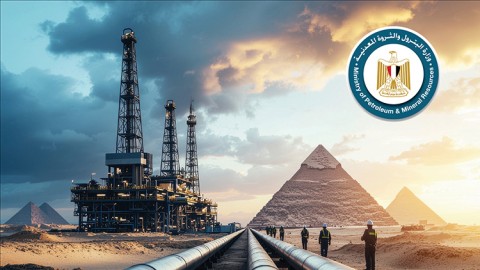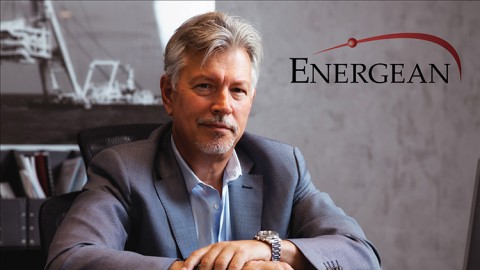Today, flare-to-power solutions are garnering more and more attention as an innovative new method for tackling the environmental and economic hurdles tied to flaring within the oil and gas sector. These solutions have the potential to transform wasted gas into a valuable source of energy, while mitigating the harmful effects of flaring.
But like any emerging technology that’s often misunderstood, there are myths and misconceptions surrounding flare-to-power solutions that need to be debunked.
Here, we’ll take a look at some of the most common myths about flare-to-power, and shed light on the reality of these promising energy solutions.
Myth #1: Flare-to-power solutions aren’t environmentally friendly
One of the most common myths about flare-to-power solutions is that they contribute to environmental harm. However, this misconception overlooks the key benefit of flare-to-power solutions: they significantly reduce greenhouse gas emissions.
In reality, when natural gas is flared, it releases carbon dioxide (CO2), methane, and black soot into the atmosphere. This flaring exacerbates climate change, harms air quality, and damages human health. And with around 140 bcm of natural gas flared globally every year, this equated to 500 Mt CO2 equivalent annual GHG emissions in 2022.
Flare-to-power solutions capture this wasted gas and convert it into energy, preventing harmful emissions and utilising a valuable energy resource that would otherwise be lost.
By harnessing the energy content of flared gas, flare-to-power solutions align with environmental sustainability goals, making them a crucial tool in the fight against climate change.
Myth #2: Flare-to-power solutions are inefficient
Another common myth is that flare-to-power solutions are inherently inefficient. Some critics argue that the process of capturing and converting flared gas into energy is too complex and energy-intensive, ultimately wasting more energy than it produces.
In reality, flare-to-power solutions have come a long way in terms of efficiency. Modern technologies and engineering advancements have made these solutions highly efficient and capable of recovering a significant portion of the energy contained in flared gas.
At Aggreko, we prioritise efficiency in our flare-to-power solutions. Using modular units that can adapt to fluctuations in gas availability, we have the ability to ensure a consistent and reliable power supply.
Ultimately, this adaptability minimises energy wastage and maximizes the utilisation of flared gas.
Myth #3: Flare-to-power solutions are unreliable
Some believe that flare-to-power solutions are unreliable due to the intermittent nature of flaring in oil and gas operations. The fear is that these solutions may not provide a stable power source for critical operations.
In reality, reputable flare-to-power solution providers use advanced technology and engineering practices to ensure maximum availability and reliability of their systems.
To address worries about declining gas volumes, Aggreko works closely with clients to develop solutions that align with environmental goals.
For example, by installing on-site gas chromatographs to provide real-time gas analysis, we can easily monitor and guarantee the consistent and verified quality of the gas supplied to the power plant. This level of monitoring and control enhances reliability.
In addition, Aggreko’s modular approach allows for seamless scalability, making it possible to adapt to fluctuations in gas availability.
This means that even during periods of intermittent flaring, flare-to-power solutions can continue to provide a stable power source.
Myth #4: Flare-to-power solutions are too costly
Another myth surrounding flare-to-power solutions is that they are prohibitively expensive. Some critics argue that the initial investment and operational costs outweigh the benefits, making these solutions economically unviable.
In reality, the cost-effectiveness of flare-to-power solutions depends on various factors, whether it’s the scale of the project, the efficiency of the technology, or the regulatory environment. While there may be upfront costs associated with implementing these solutions, they often yield significant long-term savings.
For example, Aggreko’s flare-to-power solutions have demonstrated substantial cost savings for oil and gas companies. By harnessing flared gas for energy generation, these companies reduce the need to purchase electricity from external sources, resulting in substantial operational cost reductions. Additionally, the environmental benefits of reducing flaring can lead to regulatory incentives and goodwill in the market.
Overall, as technology continues to advance, the costs associated with flare-to-power solutions are likely to decrease, making them even more economically attractive.
Myth #5: Flare-to-power solutions are only for large-scale operations
A common misconception is that flare-to-power solutions are suitable only for large-scale oil and gas operations, and are not practical for smaller facilities or remote locations.
In reality, flare-to-power solutions can be tailored to suit operations of various sizes. Modular units, such as those offered by Aggreko, provide unprecedented flexibility and scalability. These units can be deployed in both large industrial complexes and smaller, remote facilities.
For remote locations that lack access to grid electricity, flare-to-power solutions can be particularly valuable. They offer a reliable source of electricity, reducing the need for more expensive and environmentally harmful diesel generators.
The adaptability of flare-to-power solutions makes them a viable option for a wide range of oil and gas operations, regardless of their size or location.
Myth #6: Flare-to-power solutions are not technologically mature
Some critics argue that flare-to-power solutions are still in their infancy, and are not technologically mature enough to be considered a reliable alternative to traditional power sources.
In reality, flare-to-power technologies have advanced significantly in recent years, with cutting-edge technology and engineering processes helping to develop highly efficient and reliable solutions. These solutions have been successfully deployed across diverse projects and geographical contexts.
The use of modular units, real-time monitoring, and gas analysis technologies demonstrates the maturity of flare-to-power solutions. These technologies have been refined over time to ensure consistent performance and environmental benefits.
Additionally, the growing adoption of flare-to-power solutions by major oil and gas companies indicates industry confidence in the technological maturity of these solutions. They are no longer experimental concepts but practical, proven alternatives.
Myth #7: Flare-to-power solutions are only about mitigating flaring
Another common misconception is that flare-to-power solutions are solely focused on mitigating flaring, and do not offer any wider benefits.
In reality, flare-to-power solutions provide a host of advantages beyond reducing flaring. While they play a crucial role in mitigating environmental harm, they also contribute to energy security, environmental sustainability, and energy equity – the three components of the energy trilemma.
Energy Security: Flare-to-power solutions optimise the use of valuable energy resources, enhancing energy security by reducing dependence on external power sources.
Environmental Sustainability: By curbing flaring, these solutions significantly diminish emissions, contributing to environmental sustainability efforts and mitigating climate change.
Energy Equity: Flare-to-power solutions redirect valuable energy resources towards productive and accessible ends, promoting energy equity and the more equitable distribution of energy benefits.
These solutions align with the economic interests of oil and gas companies by offering the opportunity to optimise the total cost of energy, addressing both environmental concerns and economic efficiencies.
Embracing the reality of flare-to-power solutions
Flare-to-power solutions hold the promise of transforming the oil and gas industry into a more sustainable and environmentally responsible sector. By debunking common myths, we can better appreciate the potential of these solutions to address the challenges of flaring while delivering a range of benefits, from cost savings to environmental protection.
As the energy industry strives for a greener future and works towards the ambitious goal of zero routine flaring by 2030, embracing flare-to-power solutions becomes not just a choice but a necessity. With the proven success of companies like Aggreko and the growing recognition of the value of flare-to-power solutions, it’s clear that these innovative technologies are an essential part of our shared journey toward a more sustainable and equitable energy landscape.
Download our free whitepaper to learn more about flare-to-power solutions, how they can help you meet your targets, and why Aggreko is the partner
URL: https://www.aggreko.com/en-mideast/sectors/oil-and-gas/zero-routine-flared-gas-by-2030








